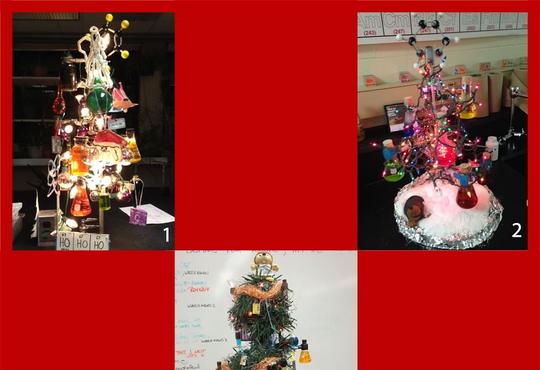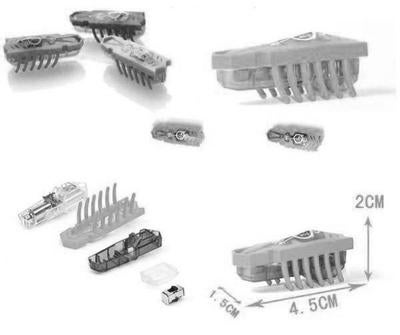 HexbugsTM Nano made their debut on the market in 2009. The four and a half centimetre-long nano Hexbugs move constantly, vibrating on ten rubbery legs. While watching my young sons race these little critters around a track with curves, straightaways and hexagonal arenas, I noticed when multiple bugs moved inside a closed track system, the system would achieve equilibrium. The essentially random motion of the bugs was analogous to the movement of molecules in a reaction system. Although my students need little confirmation that my inner nerd knows no boundaries, they appreciated the equilibrium demonstration and assessment exercises developed from my observations.
HexbugsTM Nano made their debut on the market in 2009. The four and a half centimetre-long nano Hexbugs move constantly, vibrating on ten rubbery legs. While watching my young sons race these little critters around a track with curves, straightaways and hexagonal arenas, I noticed when multiple bugs moved inside a closed track system, the system would achieve equilibrium. The essentially random motion of the bugs was analogous to the movement of molecules in a reaction system. Although my students need little confirmation that my inner nerd knows no boundaries, they appreciated the equilibrium demonstration and assessment exercises developed from my observations.
For most of my students Nano Hexbugs are a never-seen-before novelty, as they were available a little too late in their childhood. The speed and insect-like scurrying of the nanobugs immediately engaged the students. I started by setting up a simple track like the one in the picture on the next page (Fig. 1).
I did not provide the labels in the picture but rather asked students to imagine the system as analogous to that of a chemical system and then asked them to suggest labels for the components of the system. If I were to use five nanobugs as in the Fig. 1, five students would each have a nanobug and place it in the “reactants” arena. The students would observe the system as the “reaction progressed” and then I would start asking questions, such as:
- Does this system achieve equilibrium? How do you know?
- What would the analogous value of the equilibrium constant be for this system?
- What would the value of ΔG be?
- How could we represent a system where the concentration of the reactant increased?
- What would the order of the reaction be for this process? How do you know?
- How could we represent a system with several elementary steps?
- How could we represent a system with a catalyst?
All of these questions require students to actively think about the equilibrium process and I found that I could do short (5 minutes) demonstrations as I introduced each new concept in equilibrium. I did this exercise with two AP Chemistry classes and three regular grade 12 classes. I introduced the concepts and then asked a group of three to think of a way of arranging the track. The next day this group presented their track idea with an explanation. I found that the students came up with some great ideas. On the next page are some of the solutions that students came up with as answers to my questions.
I begin almost all of my classes with a five-minute quiz on the concept covered the previous day. While using the nanobug analogies these quizzes took place after each demonstration. Students are asked to sketch the system and explain the associated equilibrium concept. They are also asked to identify and explain one misconception that the demonstration could foster.
Example Quiz
- Sketch the system.
- Does this demonstration correctly depict a chemical system with a positive DG value? Explain.
- Identify one misconception inherent in this demonstration. Could you change the demonstration to avoid propagating this misconception? How?
These quizzes are formative and taking them up leads to very rich discussions about misconceptions. The student results overall indicated a stronger conceptual understanding of dynamic equilibrium and fewer misconceptions compared to previous years.
This demonstration is very time flexible as you could use it once for 5 – 10 minutes during a single class or many times during a course. For me the extra cost was minimal because my sons had the nanobug toys, and I just had to make sure they were returned before they upset the toy equilibrium in my household.
[At the online Hexbug website you can buy an individual Hexbug Nano for about CAN $7.00. A better idea would be to buy a Nano Habitat set (2 Hexbugs, 7 pathways and 2 hexagon areas) for about $25. There are several different sets, pieces and options that can be purchased online.
You can also find these little guys at most stores with a toy department. Be warned: Most geeky chemistry teachers will find these critters irresistible to play with.]
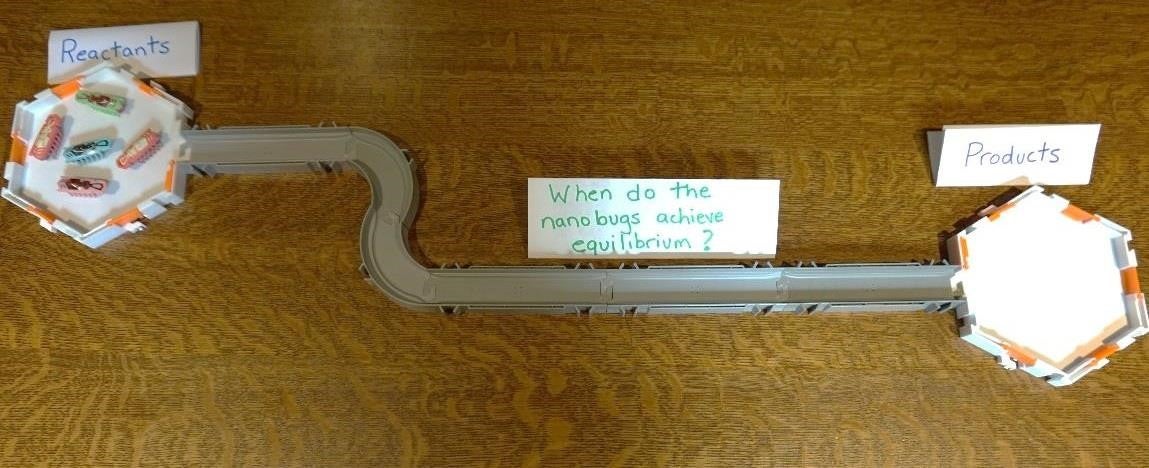
Fig. 1: A simple nanobug reaction system analogy I used to introduce equilibrium.
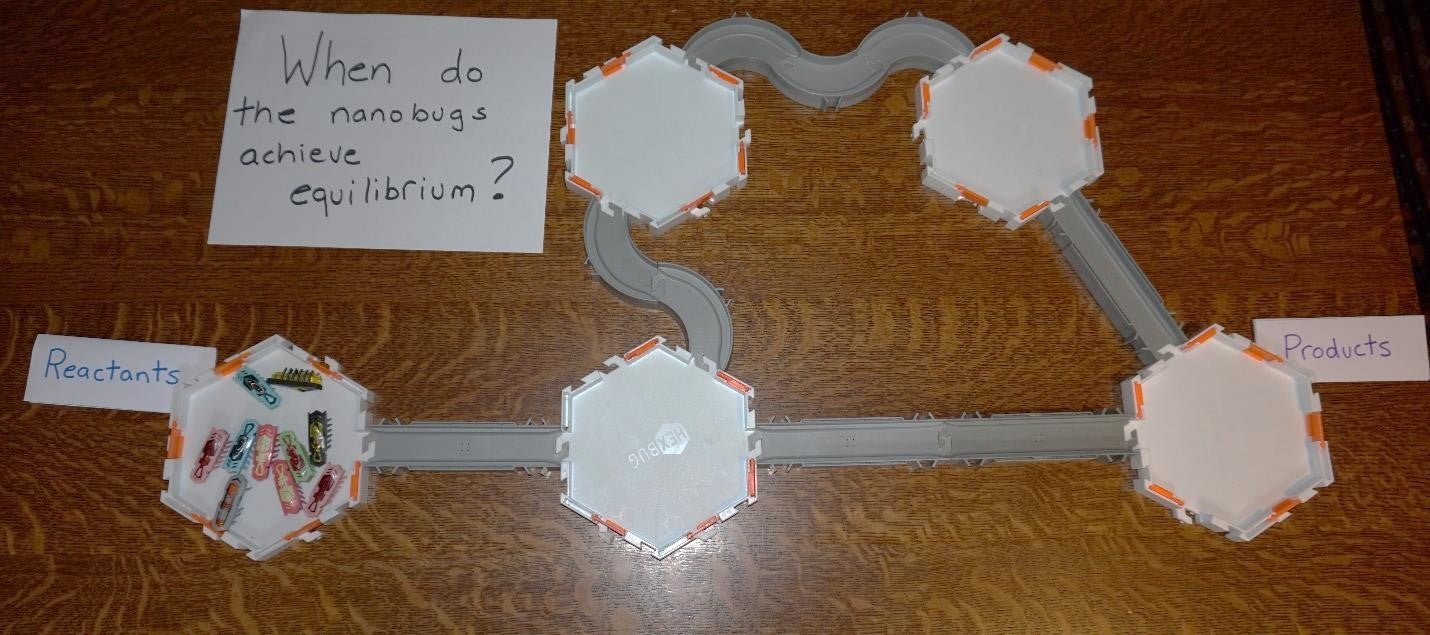
Fig. 2: I asked students to design a system with a high initial reactant concentration, several elementary steps and a catalyzed and uncatalyzed pathway. The system depicted has two elementary steps in the catalyzed pathway and four elementary steps in the uncatalyzed pathway. By closing gates on the hexagonal arenas, the class can draw an analogy to the higher activation energy required for the uncatalyzed path (it is possible for the nanobugs to “jump” the gate, but it would require much more energy than to pass through the openings in the “catalyzed” pathway).
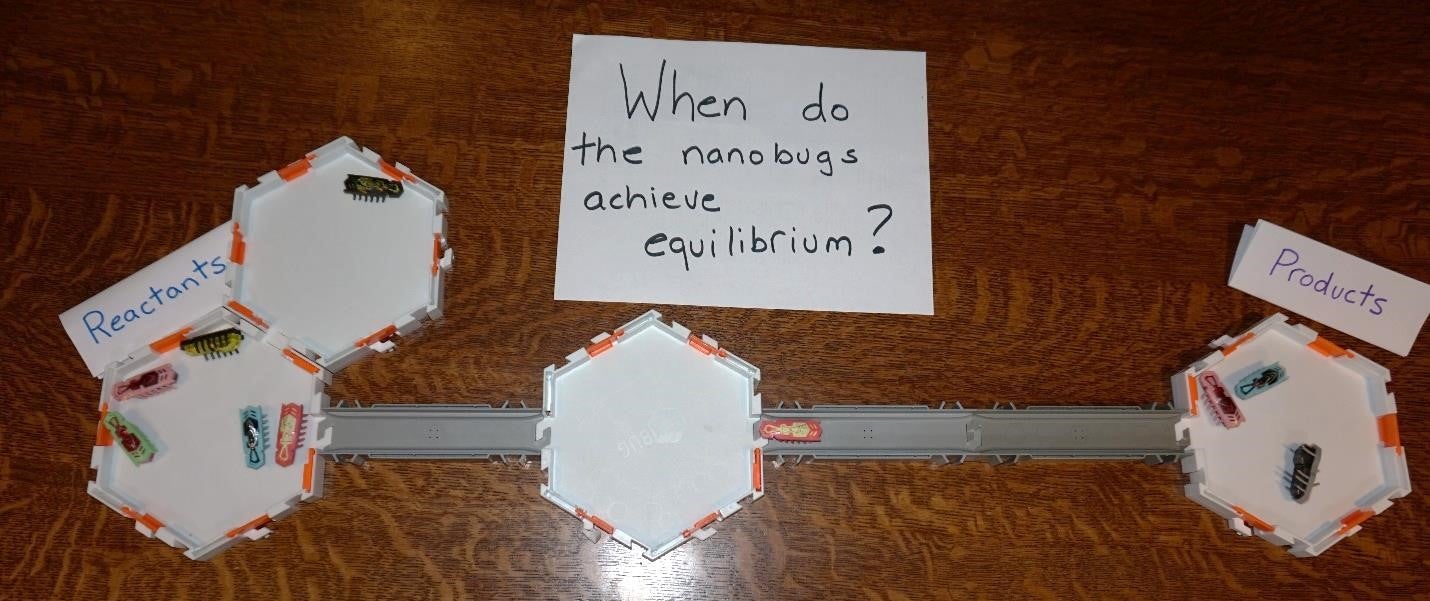
Fig. 3. I asked these students to create a system to represent a reaction with a positive G value. By expanding the “reactant” arena area, more nanobugs travelled in the “reactant” arena than in the “product” arena.



